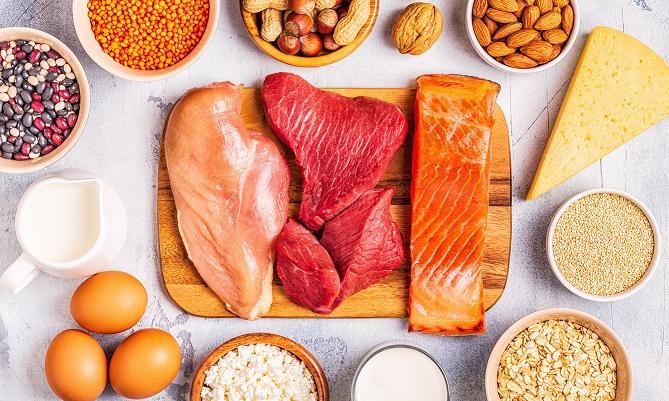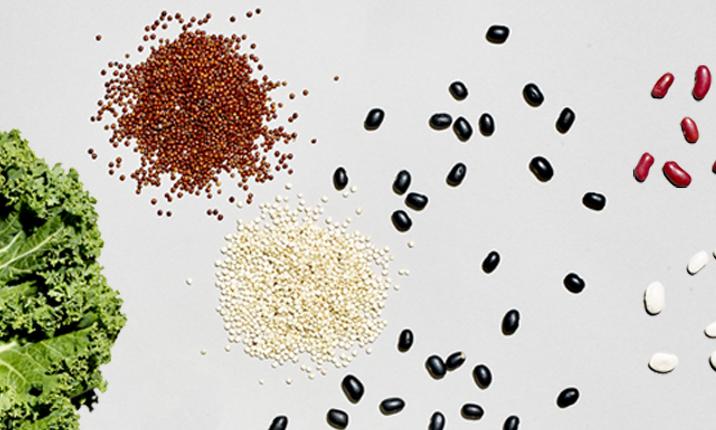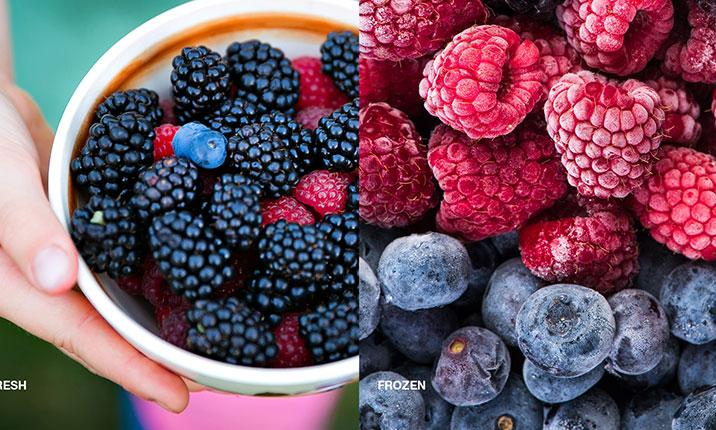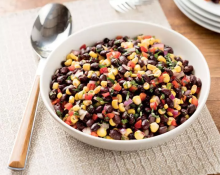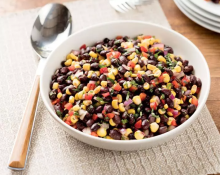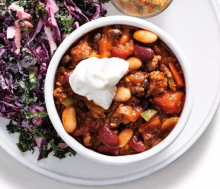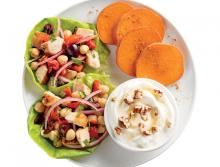Eating a balanced diet, which includes carbohydrates, healthy fats, vegetables, fruits—and protein—is key for maintaining overall health and keeping your blood glucose (blood sugar) in target range. Today, let’s discuss the role of protein and how it plays a part in your diabetes management, its benefits, how much of it you should eat, and the best sources.
Benefits and Role of Protein in Diabetes Management
Protein offers several benefits for the body and diabetes management, including:
- Maintaining muscle mass: Diabetes puts you at a higher risk of muscle loss and this risk only increases as people age. Protein can help build and repair muscle, preventing mobility issues that may stop you from doing the things you love, like hiking, gardening, and walking with loved ones.
- Healing wounds: People with diabetes have an increased risk for slow- or non-healing wounds (cuts and scrapes) because of issues with blood flow and higher blood glucose levels. Protein assists with skin and tissue repair, helping to heal wounds faster and avoid complications, like foot ulcers.
- Weight loss and managing blood glucose levels: Eating protein combined with fiber-rich carbohydrates during a meal helps you feel fuller for longer (which reduces the chances of overeating) and slows the rise of blood glucose. Overeating can contribute to weight gain, high blood glucose, and insulin resistance. Not overeating can help you lose weight, which helps to improve insulin sensitivity, lower blood glucose levels, and prevent further complications of diabetes.
How Much Protein Should Someone with Diabetes Eat?
For people with and without diabetes, it’s generally recommended to eat about 0.8 grams of protein per one kilogram (or a little over two pounds) of body weight. For example, if you weigh 150 pounds (about 68 kg), you should aim for at least 55 grams of high-quality protein per day.
However, the amount of protein you should eat depends on your activity level, gender, muscle mass, and any health conditions, such as kidney disease. If you have kidney disease, the amount you should eat may decrease to .6 grams per kilogram of body weight per day.
To learn the amount that’s best for you, talk to your doctor or registered dietitian.
Protein and Blood Glucose Levels
Although protein itself does not directly raise blood glucose levels, eating a lot of it (over 75 grams per meal) can cause a slight increase in blood glucose levels three to five hours after eating. According to the American Diabetes Association’s Standards of Care in Diabetes, there is no “best” amount of protein that will help with blood glucose management or heart disease risk.
Best Protein Sources for People with Diabetes
Nutrient-dense, heart-healthy foods are the best protein sources for people with diabetes. Here are some excellent options:
- Lean meats and fish: Lean poultry (such as chicken or turkey breast without skin) and fish are low in saturated fat, which is beneficial for heart health. A 3-ounce portion of baked salmon provides around 17 grams of protein and is a good source of heart-healthy omega-3 fatty acids.
- Eggs: One large egg provides 6 grams of protein and makes for a convenient snack or side to a complete meal. Choose egg whites or cholesterol-free egg products if you are concerned about cholesterol.
- Dairy: Low- or non-fat Greek yogurt (5.5 ounces) offers 16 grams of protein. Choose the plain variety to avoid added sugars.
- Plant-based proteins: If you want to avoid meat or are looking to add more plant-based foods to your diet, try getting your protein from beans, lentils, tofu, and edamame. These protein sources also add more fiber, which may help further manage blood glucose. A half-cup of cooked lentils provides about 9 grams of protein and 8 grams of fiber. Nut butters, such as almond or peanut butter, are also great options, but be sure to select varieties without added sugars. Review the Nutrition Facts label for the carbohydrate content of nut butters as they contain both protein and carbohydrate.
For a full list of protein choices, check out the American Diabetes Association’s protein source list.
Tips for Balancing Protein in Your Diet
To maintain a balanced intake of protein, use the Diabetes Plate as a guide. Aim to fill one-quarter of your plate with lean protein at each meal. A 3-ounce portion of lean meat is roughly the size of a deck of cards and provides about 21 grams of protein. Pairing protein with fiber-rich carbs like leafy greens or whole grains may improve blood glucose management and promote fullness.
The Takeaway
Protein is essential for individuals with diabetes because it plays a key role in muscle maintenance, wound healing, blood glucose management, and overall health. Ensure a variety of protein sources with lean meats, fish, dairy, and plant-based foods. Maintaining a balance of carbohydrates and healthy fats with protein is key for optimal diabetes management. Always consult a registered dietitian or health care provider to create a personalized nutrition plan that works for your health goals.
For more resources, visit Diabetes Food Hub to find delicious protein-filled recipes and meal plans to help incorporate protein into your breakfasts, lunches, and dinners!
